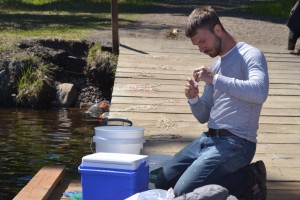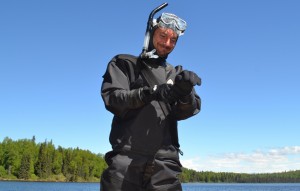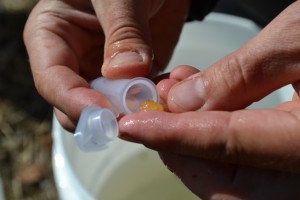Are you a cub or a mama bear?
I was asked this question on one of the first days in Alaska. The logic behind the question was to see if I consider myself one of the faculty members running the trip or one of the students. Now that may seem like a ridiculous question, but it actually triggered a line of thoughts that most post-docs experience. When does one’s mindset shift from being a student (cub) to a faculty member (mama bear – they said John had already been designated papa bear!). Is it when you finish your defense? Is it when you secure your first faculty position? My guess is that there isn’t a specific moment for most people and that one’s mindset is highly context dependent. If you are around just students, you probably are more likely to think like a student. If you are around faculty, you are more likely to think like a faculty member. So what does any of this have to do with my trip to Alaska to work with sticklebacks?

I spent my first 10 years in research working with turtles. There was a comfort level there that allowed me to collect data relatively efficiently and spend the rest of my time working on papers and chasing grant dollars. I’d argue that my mindset became more faculty-like over this period. Most of my time was spent thinking and writing about things I knew (or thought I knew). As life would have it though, I was not a faculty member and ultimately I took a new post-doc position in the lab of Alison Bell. That is how I ended up here in Alaska. Upon arrival, my mindset quickly became more similar to that of a student. My thoughts were focused on all of the things I didn’t know. How do you know when a female has ovulated her eggs? What does a successfully fertilized egg look like? How do you put on a dry suit? Am I going to freeze to death in this water? The list goes on.

Initially, I thought switching to a new study system constituted a step backwards because I had to spend a chunk of time learning the

answers to relatively simple questions. However, this trip to Alaska has made me realize/remember that this is the part of the process that drew me to science in the first place. I love the pursuit of knowledge and that got lost while my focus was on pumping out publications and grants. I know that when I return home, my focus is likely to shift back to publications and grants but for right now, I’m going to enjoy learning as much as I can about sticklebacks from a number of people that are excited to teach me about them.
So I guess my answer to the question is that I’m going to be a cub while I’m up here in Alaska.
**Ryan is a post-doc in Alison Bell’s lab at University of Illinois and joined our Summer 2013 Alaskan Sticklecrew to collect clutches from wild females. He will be measuring them for steroid content when he gets back to Illinois.**